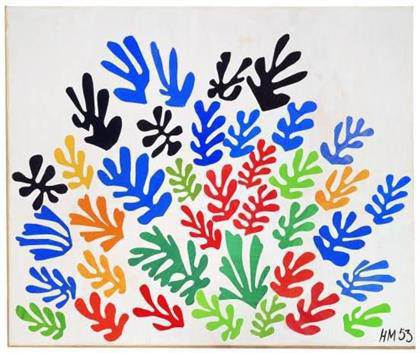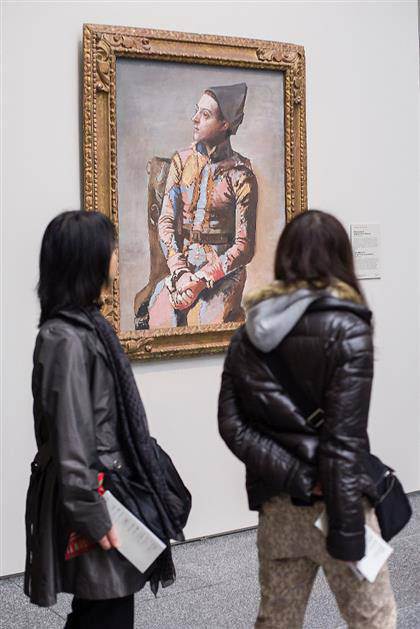
Henri Matisse, The Sheaf, 1953.
Gouache on paper, cut and pasted, mounted on canvas
293.4 x 350.5 cm.
Collection University of California, Los Angeles. Hammer Museum. Gift of Mr. and Mrs. Sidney F. Brody. © Succession H. Matisse, c/o Pictoright Amsterdam, 2014.

Henri Matisse and assistants working on ‘La perruch et la sirène’ in Nice © Succession H. Matisse, c/o Pictoright 2014.
“The Oasis of Matisse” – Stedelijk Museum With over 100 works on loan from 35 leading international museums, the Stedelijk Museum Amsterdam presents the most comprehensive survey of Matisse ever shown in the Netherlands. 27 March—16 August 2015.]]>
Source: Stedelijk Museum Amsterdam
The Stedelijk conceived a unique exhibition concept for The Oasis of Matisse: the permanent collection on the ground floor is enriched with a selection of Matisse masterpieces, creating surprising combinations with the work of his contemporaries, teachers and followers. Visitors discover how, in 1914, Mondrian and Matisse were both pushing towards abstraction but in very different ways, and how raw the work of Matisse is when contrasted with German Expressionists like Kirchner.
After following Matisse’s development on the ground floor, on the first floor, visitors enter the oasis that Matisse created as a mature artist. Where the downstairs galleries revealed how the surface became progressively flatter in this part of the exhibition visitors can admire his world-famous cut-outs in their full glory. At the heart of this presentation is “The Parakeet and the Mermaid”, which Matisse considered his finest cut-out. This perennial favorite is on display together with other monumental Matisse cut-outs that have rarely, if ever, been seen in the Netherlands such as “Memory of Oceania” from the Museum of Modern Art in New York, “The Snail” from the collection Tate Modern, London and “The Sheaf” from the Hammer Museum of Art in Los Angeles. Also featured are seldom exhibited works in textile and stained glass which were inspired by the cut-outs.
As one of the founders of modern art, Henri Matisse (1868-1954) is among the most-admired artists of the twentieth century. His favorite subjects include interiors with Eastern nudes, colorful fabrics, carpets, potted plants and idyllic landscapes. Matisse excelled in blending foreground and background into a dazzling pictorial plane—the sumptuous patterns of a tablecloth overflow into a woman’s dress, or wallpaper. Matisse seeks inspiration in Algeria, Morocco, Nice and Tahiti. There, he discovers a paradise that he evokes in undulating lines and flat areas of color.
Matisse later became an internationally celebrated artist. So it was all the more astonishing when, at the end of his life, he set off in an entirely new direction to make monumental, ornament-like cut-outs. But in surveying Matisse’s entire oeuvre, it is clear that from his earliest modern works until his death the artist sought to evoke a bright, joyous simplicity with the minimum of color and shape.
Related content
MoMA presents ‘Henri Matisse: The Cut-Outs’ (exhibition, 2014)
Follow us on:


